The fortune teller.
1825.
Oil on canvas.
Signed and dated upper left.
H. 74 ; L. 80 cm.
Provenance:
Exhibition of Living Masters (Tentoonstelling van Levende Meesters), Haarlem, 1825, no. 240.
Albertus Bernardus Roothan, 1825.
Ryfsnyder collection; his sale, Amsterdam, 28 October 1872, number 124.
On a sober background, an elderly woman is reading in the palm of the hand of a younger woman turned three-quarters. Both figures are dressed in contemporary clothing typical of the 1825s. The fortune-teller's gaze is raised towards her client's face, while the latter lowers her eyes to read the lines in her hand, directing the viewer's eye towards a triangle with the old woman's pointing hand in the centre. The tight framing amplifies the feeling of being absorbed in their conversation.
This painting is mentioned in the catalogue raisonné of Jan Adam Kruseman's work, its location unknown[1]. It was exhibited in Haarlem in 1825 under the number 240 "Een Brabandsche Waarzegster"/"A Brabant fortune-teller"[2].
Born in Haarlem in 1804 to a bourgeois family of German origin, Kruseman left his home town for Amsterdam in 1819, where he joined the studio of his cousin, Cornelis Kruseman, seven years his senior. He continued his apprenticeship until 1821, when his cousin left for Italy. He then continued as a self-taught artist, while taking his first portrait commissions after winning a prize with Felix Meritis.
In 1822, buoyed by his initial success, he went to Brussels to complete his apprenticeship with the two most influential artists of his time, François-Joseph Navez (1787-1869) and Jacques-Louis David (1748-1825). Under the guidance of the latter, he produced numerous study sketches and history paintings. Navez, for his part, exerted a classicist influence on his work. When he began studying under Navez, the latter had just returned from Italy, where he had discovered the paintings of Ingres and the Nazarenes, in his quest to reconcile the tensions between realism and idealism.
Kruseman lived in Paris during 1824 and his work really began to emerge from the public eye in 1825 when he returned to Amsterdam. On 11 May 1826 he married Alida de Vries (1799-1862), with whom he had five sons, two daughters and an adopted son, Alida's sister.
The end of the 1820s marked the rise of the artist; he became a member of the Dutch Society of Fine Arts and Sciences in 1828, and was then appointed director of the Royal Academy of Art in Amsterdam.
In 1832, he opened his own studio and from 1834 to 1836, he made several study trips to Germany, England and Scotland.
In 1844, King Wilhelm II appointed him a member of the Royal Netherlands Institute. He was also made a Knight of the Order of the Lion in the same year. He was an accomplished artist who was particularly appreciated, as demonstrated by the commentary accompanying the works he exhibited at the Salon des Artistes Vivants in Amsterdam in 1841[3] : "J.A. Kruseman, in Amsterdam, has again supplied some of these portraits, which are proof of the great merits of this artist (...); it is therefore not without reason that this artist is the darling of the public".
The artist maintained close links with members of the royal family, who commissioned portraits from him and bought his works when he exhibited. His most famous work was the portrait of King Wilhelm II.
He played a central role on the artistic scene of his time, was present in all the artistic societies and received dozens of distinctions throughout his career. As he himself admits, all this takes up so much of his time that he regrets not being able to spend more time with his family.
After 50 years of rather happy family life, one tragedy followed another in the Kruseman family and the painter finally succumbed to an illness on 17 March 1862. He was so much appreciated and integrated into Dutch society that no fewer than 394 letters of mourning were sent to his family[4]..
The Fortune Teller represents a very interesting and little-known milestone in Kruseman's career, as known paintings from this artistic period are rare. Indeed, the influence of Navez can be seen in the tight framing and the subject, but Kruseman was already expressing a style that would prove successful on his return to the Netherlands, using contemporary costumes and seeking a gentleness of expression that was less marked by the heroic expression sought by David and Navez.
After his return to Amsterdam in 1825, Kruseman kept in touch with Navez, but he was also still under the influence of David, who was making his mark in the southern Netherlands. He sought expression in his portraits and we can compare the self-portraits of Navez (1826), David and Kruseman (1827) for their strong expression: Navez represents himself with a heroic expression while Kruseman seeks to highlight a friendly look.
A touching detail in this painting bears witness to this: the young woman's lowered eyes shine through her long lashes and a slight pout appears on her face.
Illustration :
François-Joseph Navez, self-portrait, oil on panel, 1826, Royal Museums of Fine Arts of Belgium (Inv. 3790).
Jan Adam Kruseman, self-portrait, oil on canvas, 1827, Rijksmuseum (Inv. BR2885).
Références :
[1] Renting Anne-Dirk et al. Jan Adam Kruseman, 1804-1862. Nijmegen: G.J. Thieme, in samenwerking met Stichting Paleis Het Loo Nationaal Museum, 2002, cat. 55.
[2] Levende Meesters, Haarlem, 1825, catalogue n. 240.
[3] Levende Meesters, 1841.
[4] Renting Anne-Dirk et al. Jan Adam Kruseman, op. cit.




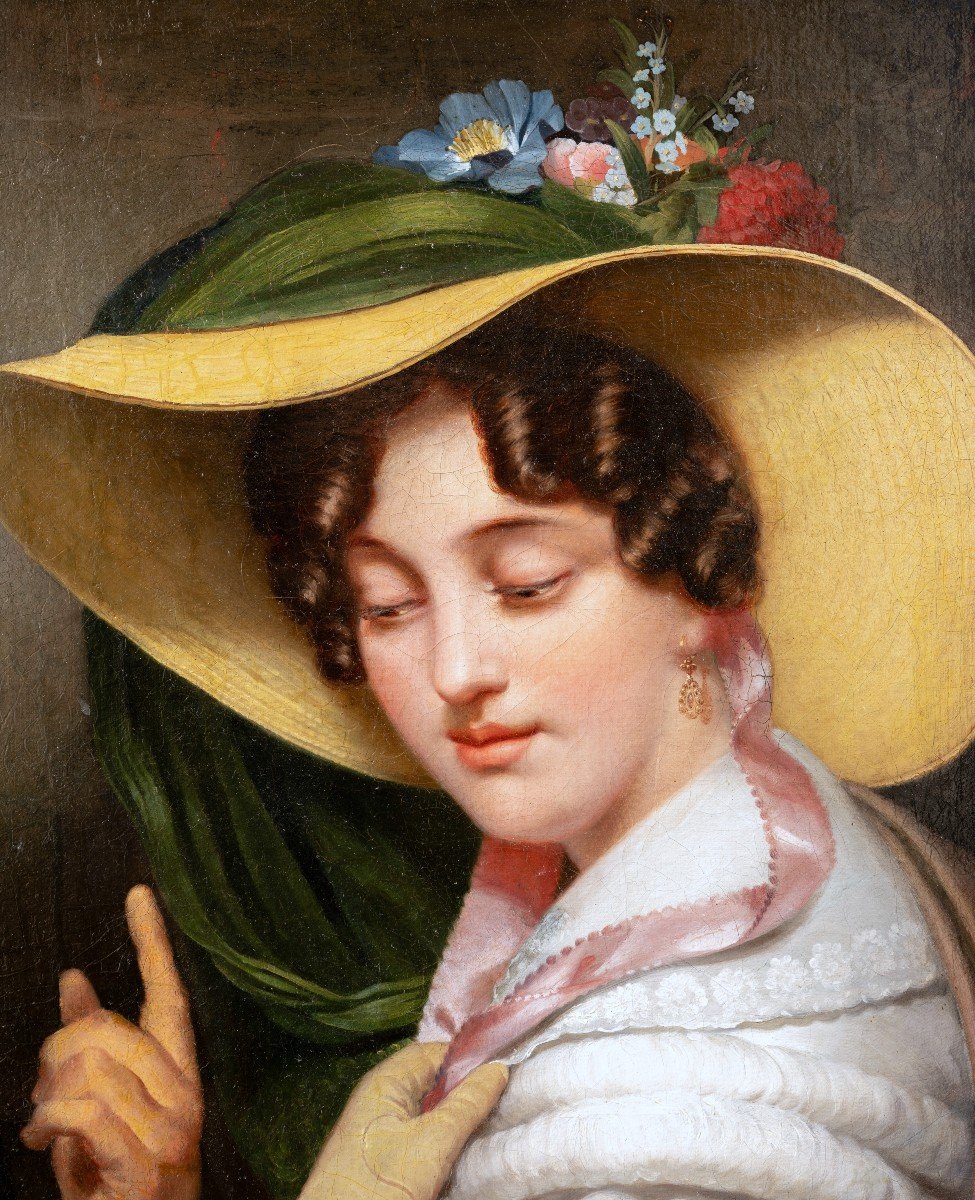






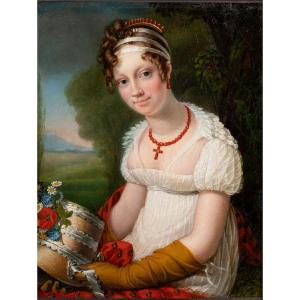
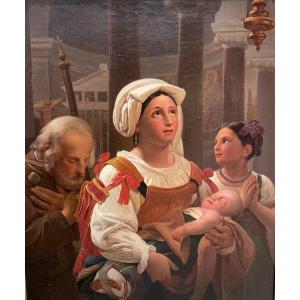








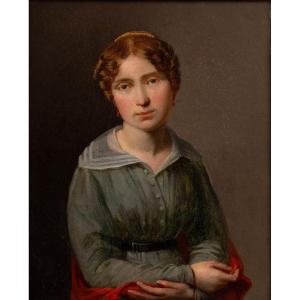



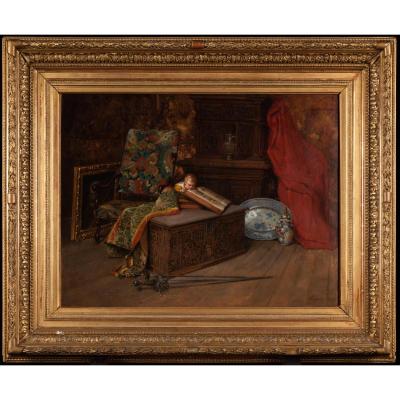
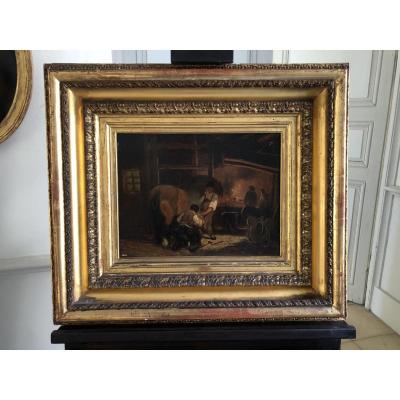

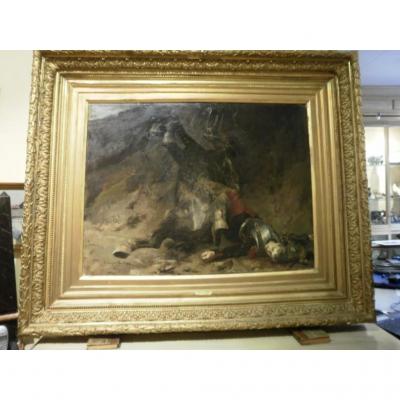




 Le Magazine de PROANTIC
Le Magazine de PROANTIC TRÉSORS Magazine
TRÉSORS Magazine Rivista Artiquariato
Rivista Artiquariato